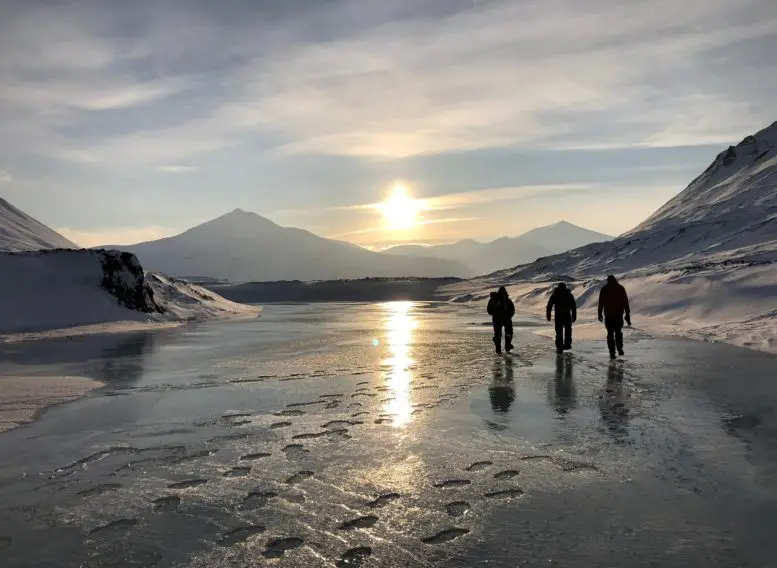Scientists worry that additional methane emissions released by the melting Arctic could exacerbate human-induced global warming. The sources studied by the researchers were not previously seen as a potential source of methane emissions.
Kleber spent nearly three years observing the water chemistry of more than a hundred springs in Svalbard, where temperatures are rising twice as fast as the Arctic average. He likens Svalbard to the canary in a coal mine that is causing global warming: “Because it’s warming faster than the rest of the Arctic, we’re able to preview potential methane releases that could occur on a larger scale in this region.”
Professor Andrew Hodson, co-author of the study, from the University Center in Svalbard, said: “Living in Svalbard puts you at the forefront of climate change in the Arctic. I can’t think of anything more terrifying than the image of methane released right before a retreating glacier.”
Previous studies have focused on methane release during permafrost (frozen ground) melt. “While the focus is often on permafrost, this new discovery tells us there are other methane emission pathways that may be even more important in the global methane budget,” said study co-author Professor Oleksandra Turchyn. your science
Hodson added: “Until this study was done, we didn’t understand the source and pathways of this gas because we were reading about studies in completely different parts of the Arctic where there was no glacier.”
The methane-emitting sources they discovered are fed by an aqueduct system, most of which is hidden beneath the glacier and draws large volumes of groundwater from the underlying sediments and surrounding rocks. When glaciers melt and retreat, springs arise where the groundwater network rises to the surface.
The researchers found that methane emissions from Svalbard’s glacial groundwater sources could exceed 2,000 tonnes per year, equivalent to about 10% of methane emissions from Norway’s annual oil and gas power industry.
This source of methane is likely to become more important as more resources are discovered, Kleber said: “If global warming continues unabated, methane release from glacial underground sources will likely increase even more.”
Glacial underground sources are not always easy to spot, so Kleber trained his eye to distinguish them from satellite imagery. Approaching the land areas exposed by the retreat of Svalbard’s 78 glaciers, Kleber looked for distinctive blue patches of ice where groundwater had seeped and frozen to the surface. He then traveled by snowmobile to each of these locations to collect groundwater samples in areas where ice had risen due to pressurized water and gas buildup.
When Kleber and his team analyzed the chemistry of the water supplying these springs, they found that all but one of the sites they examined contained high concentrations of dissolved methane; this means that when the spring water reaches the surface, there is plenty of excess methane. get out into the atmosphere.
The researchers also found local hotspots of methane emissions that are closely related to the type of rock the groundwater comes from. Some rocks, such as shale and coal, contain natural gases, particularly methane, produced by the breakdown of organic matter during rock formation. This methane can pass up through cracks in the rock and into groundwater.
“At Svalbard, we are beginning to understand the complex and cascading feedbacks caused by melting glaciers – it looks like there are other similar consequences yet to be explored,” Kleber said. Said.
“The amount of methane coming out of the sources we measured is likely to be less than the total volume of gas sitting under these glaciers waiting to be released,” Hodson said. “This means we urgently need to identify the risk of a spike in methane seepage, because glaciers will continue to recede as we deal with climate change.” Source













